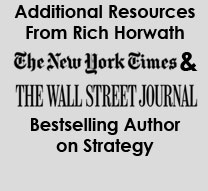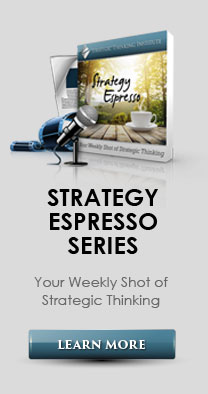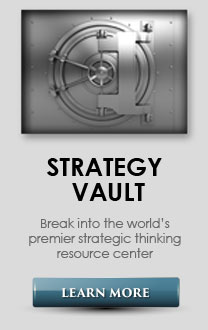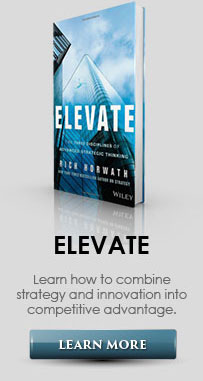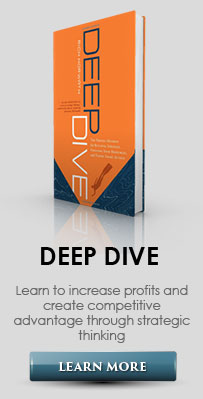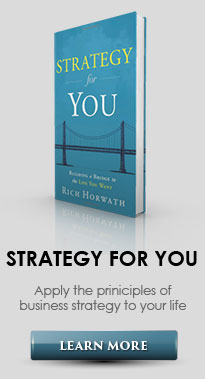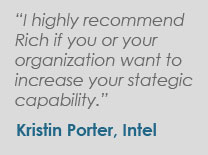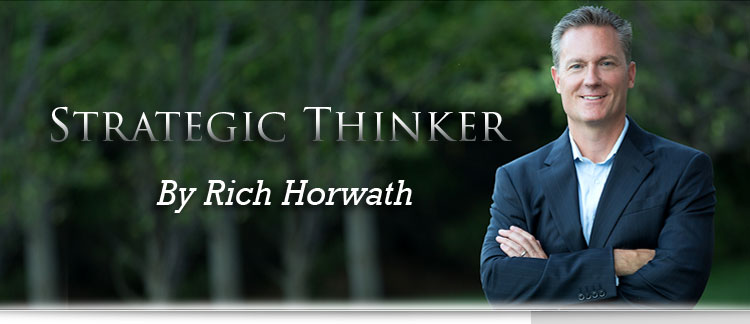
Different or Dead"When you've got only single-digit market share and you're competing with the big boys, you either differentiate or die." Michael Dell, founder, Dell Technologies The words of Michael Dell may seem alarmingly harsh. After all, there are plenty of examples of products and services that aren't much different from their competition that are still around. The question is, for how long? A study of 25,000 companies during the past 40 years found that the companies that focused on differentiation were in the top 10% in return on assets. As Peter Thiel, co-founder of PayPal wrote, "All happy companies are different. All failed companies are the same. If you want to create and capture lasting value, don't build an undifferentiated business." Differentiation for competitive advantage in business has its roots in science. In 1934, Moscow University Professor G. F. Gause published the results of a landmark study. He placed small animals in an enclosure with an ample amount of food. If the animals were of the same genus and a different species, they could live together peaceably. However, if the animals were of the same genus and the same species, they were not able to coexist. This led to the Principle of Competitive Exclusion, which states that no two species can coexist that make their living in the identical way. If we stay in the animal kingdom and think of two male lions in the same small territory, it makes sense. After a while, one of the male lions will no longer be around because they're trying to do the same thing in the same way. Observe the companies that are struggling today and it's a good bet one of the reasons is their failure to heed the Principle of Competitive Exclusion. They are stuck doing the same things in the same ways as their competition. Think of prominent companies that went into bankruptcy and their close competitors: Circuit City and Best Buy; Borders and Barnes and Noble; Sports Authority and Dick's Sporting Goods. When a company continually fails to differentiate their offerings from competitors, sooner or later, they're going to be someone's lunch. If you and your team are struggling with flat or declining sales, one potential cause is a lack of relevant differentiation from competitive offerings. Consider the following questions in thinking about your offerings:
During the strategic thinking and planning workshops I lead, these questions are typically the most difficult for managers to answer. And that's not surprising when you see research from Harvard that shows 80 percent of adults believe the task of "thinking differently" is exhausting and uncomfortable. Some managers believe that because of the industry in which they reside or the regulatory environment, there simply aren't any places left to differentiate. However, the appropriate use of strategic thinking tools and techniques can help managers begin to uncover hidden sources of differentiation as well as ideas for future innovation. The auto industry serves as one example where competitive convergence has been the norm. Enter Tesla. In 2015, it shot to the top of Forbes Magazine's World's Most Innovative Companies list due in large part to its' differentiated approach and offerings. Starting at the high-end of the automobile market, it introduced the Roadster, the first electric sports car and then the Model S, an electric luxury sedan. The Model S has been the world's bestselling plug-in electric car for two years in a row. Tesla next brought to market the Model X, a crossover SUV and is gearing up for the launch of the mass market Model 3. Tesla has used a different approach than other auto makers to gain traction in the market. They bypassed the traditional automotive dealerships and created more than 200 galleries and stores, and sell directly to customers via the internet and non-U.S. based stores. Traditional automakers outsource around 80 percent of components to suppliers, whereas Tesla's vertical integration, including component production, is roughly 80 percent. While their electric car competitors use single-purpose, large battery cells, Tesla employs thousands of small, cylindrical, lithium-ion cells. They also built all the software used to run the cars from scratch, instead of the customary outsourcing. Tesla also benefits from CEO Elon Musk's other venture, SpaceX, an American aerospace manufacturer. Tesla has borrowed from SpaceX's techniques of extensive use of aluminum for the Model S body and chassis, in addition to casting and drawing designed to produce the bodies of the SpaceX's Falcon rocket and Dragon capsules. Tesla's differentiated approach and offerings have resulted in both financial success (Model S is 2nd bestselling plug-in electric car in history) and customer delight (#1 in Consumer Reports' Annual Owner Satisfaction Survey). As Michael Porter, professor at Harvard Business School said, "There is no best auto company. There is no best car. You're really competing to be unique." Do you think your offerings are unique? More important, do your customers think they are unique? According to research, the answer is, "probably not." One study showed 80 percent of executives believed their offering was highly differentiated, but only 8 percent of their customers agreed with them! A key indicator of your offering's level of differentiation is the value proposition. The value proposition describes the rationale behind why customers would choose one offering over others. While the value proposition would appear to be an obvious given for the leaders of any organization, research shows it's not. As authors Kaplan and Norton write, "In our research, we have found that although a clear definition of the value proposition is the single most important step in developing a strategy, approximately three-quarters of executive teams do not have consensus about this basic information." The value proposition can be broken down into four pieces:
The value proposition begins with a specific customer segment and their unmet need—the job to be done. For instance, beginning with a job to be done like cleaning a floor can provide innovative options ranging from the Dyson vacuum to a Swiffer to the Roomba cleaning robot. The value proposition for a Dyson vacuum might look like this: Dyson serves middle-class and affluent customers with highly effective dirt removal from carpeted or non-carpeted floors by using bag-less vacuum cleaners with cyclone technology in a stylish, see-through design, resulting in less time needed to clean. In this example, we see the elements of the value proposition clearly identified:
If your team is struggling to find differentiation in your value proposition, imagine how your customers feel. If you have a clear value proposition, each member of your organization should be able to answer this question: What is the primary differentiated value our offering provides to customers? A study of more than 200 companies found that 93 percent of the top 20 percent of financial performers have a strong form of differentiation at their core. Does your business have that critical form of differentiation at its' core? Developing, honing and communicating your offering's areas of differentiation are crucial to future success. It's not until you get off the beaten path, that the beating can begin. |
